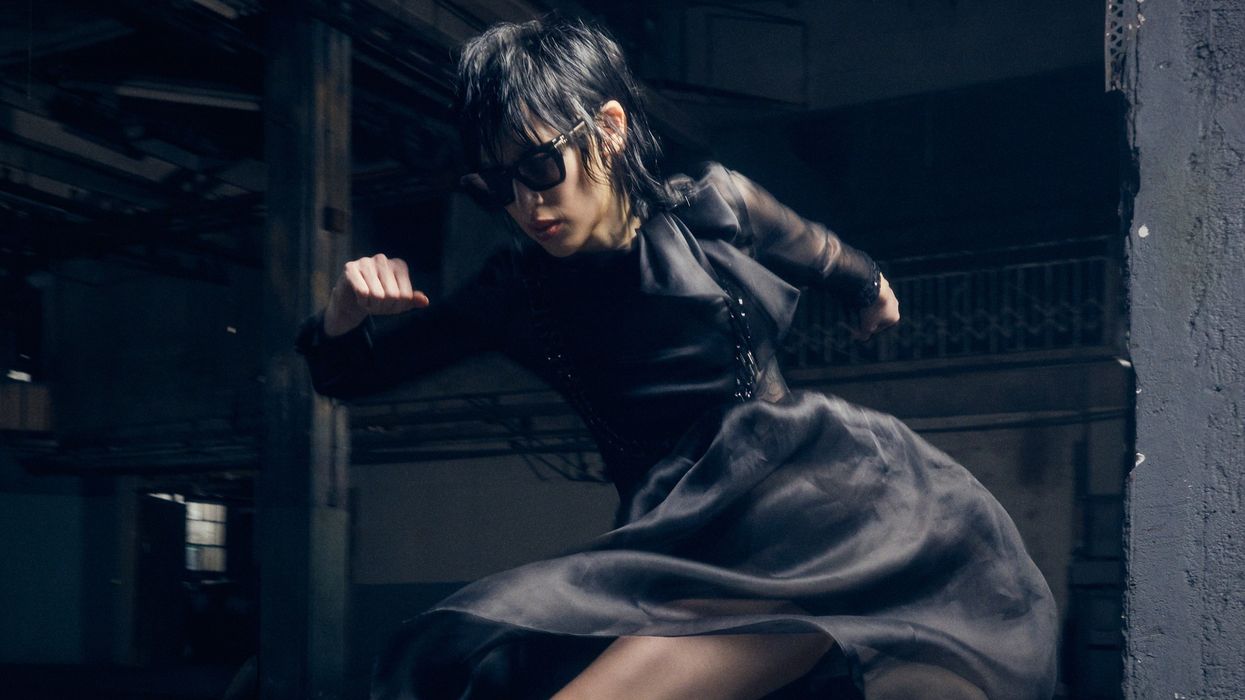
In a sea of peacocks at fashion industry events, journalist and Document Journal critic-at-large Katharine Zarrella channels the raven. The digital documentarian has lived in New York most of her adult life and adheres to the local trope of dressing almost exclusively in black (with occasional guest appearances by a Comme des Garçons scarlet or a Schiaparelli pink). “When I was four or five years old, my mom told me that all-black was very chic, and that has lived with me my entire life,” she says.
For Zarrella, adopting a pseudo uniform of head-to-toe black was more emotional than it was logistical. She’s not immune to the sartorial mourning joke—there’s none on today’s schedule—but assures me her goth palette is actually quite joyful (plus, it adds a general dusting of badassery to her demeanor). Her happiness expresses itself in shape rather than saturation. Somber feelings appear as highly structured pieces, while joy leads to fluff and sheen. Unsurprisingly, Alaïa, and Comme Des Garçons feature in heavy rotation. Junya Watanabe, Yohji Yamamoto, Noir Kei Ninomiya contend, as well. “Colorful clothing has its own virtues, but I think you can really appreciate a garment’s architectural properties when it's in black.”
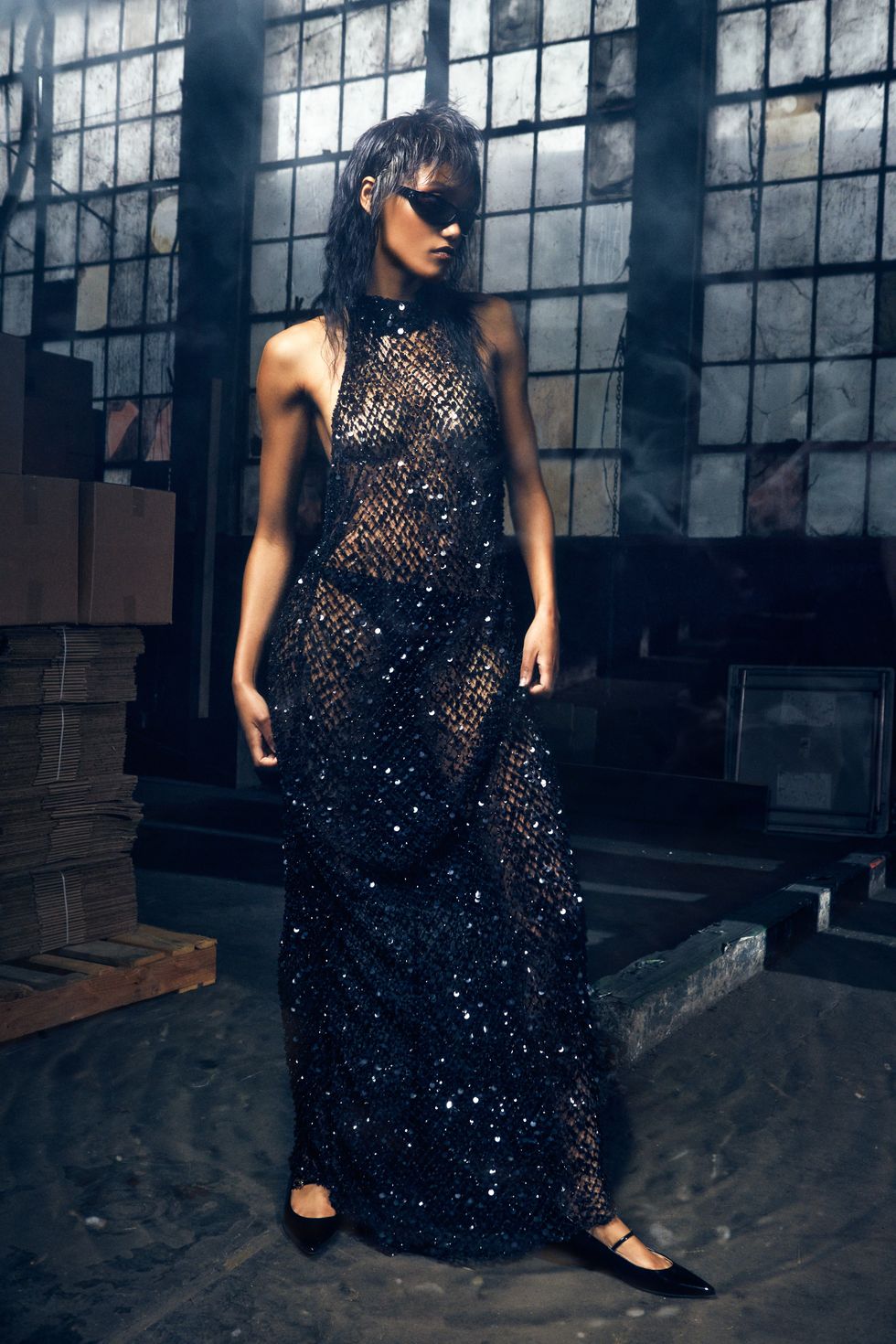
Dress: Lapointe; Sunglasses: Bonnie & Clyde

Flats: Gianvito Rossi
For Fall 2024, Valentino’s outgoing creative director Pierpaolo Piccioli channeled that premise into an all-black collection that articulated the house codes (ruffles, bows, etc.) and laced them with a newfound power. Though many speculated the blackout symbolized mourning for his then soon-to-be-announced departure, the clothes were anything but dour. They ranged from sharp masculine tailoring to flouncy feminine hemlines, each stitch accentuated by the absence of color. (Also of note: Piccioli himself dons a uniform of head-to-toe black.)
I won’t begin to list all the Fall 2024 collections in which black featured prominently—it’s a bit of a florals-for-spring situation—but I was amazed at how many head-to-toe black ensembles walked the runways. Heather Klein, The RealReal’s associate merchandising manager agrees. “The Row’s collection boasts the classic color in coats, blazers, vests, and streamlined dresses; Proenza Schouler showed an understated runway with head-to-toe black looks; and Celine modernized the classic all-black set,” she says. Even typically vibrant designers like Batsheva Hay displayed more of the seemingly somber hue than usual. “We see this trend continue especially from our quiet-luxury customer, with black dresses and blazers being the top searched for clothing,” Klein continues.
“My very first take is more a cynical view,” assesses Emma McClendon, a historian and assistant professor of fashion studies at St. John's University. “It is very commercially viable. We're in a place where, obviously, so much of the [rhetoric] about retail, about growth, about the fashion industry globally is really bleak. There was a general turn in recent collections where we did see a more commercial bend.” Black is commercially viable. “[Globally], one in five items sold are black, nearly double that of blue and other neutrals,” says Klein.

Dress and Cape: Tory Burch; Bangle: Alexis Bittar
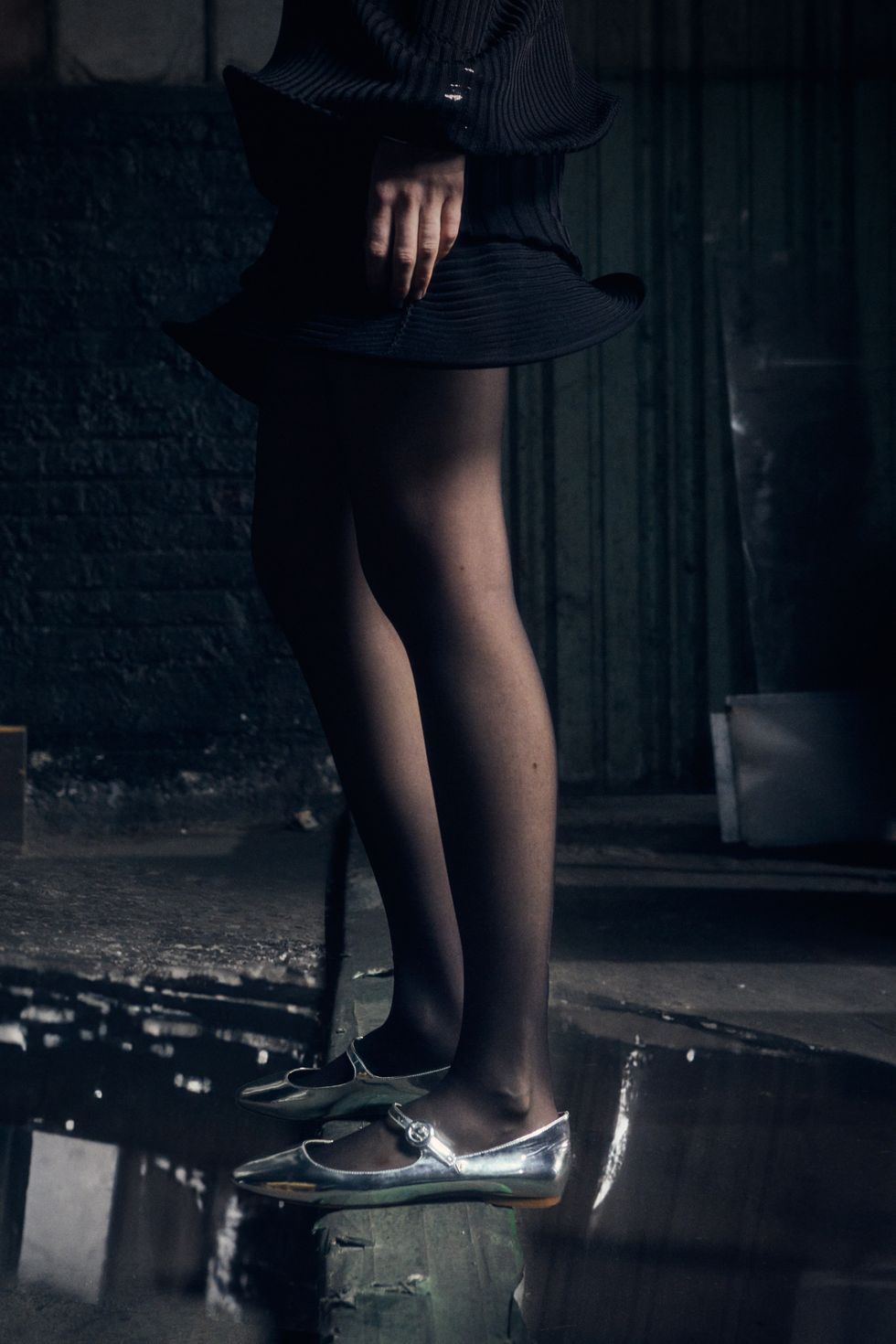
Many of the legacy houses that built reputations on formalwear have house codes steeped in black: Coco Chanel and the LBD. Yves Saint Laurent’s Le Smoking. Dolce & Gabbana’s lacy bustiers. More recently, Daniel Roseberry resuscitated black as the dominant palette at Schiaparelli. Demna has likewise ushered in an all-black renaissance for Balenciaga throughout his tenure.
Black is neutral in denotation rather than connotation. It’s not the neutral of a beige hoodie-and-jogger set. As Roseberry shows us, black is the most formal color; it puts the “black” in black-tie. McClendon notes that we have re-entered a post-pandemic, post-dopamine dressing return to dress-coded events, whether that’s a boardroom meeting or a bridal brunch, making black especially poignant for the moment. It’s a return to formality and what McClendon calls “a retaliation [of older generations] to Gen Z’s control of the fashion dialogue in antithesis to baggy jeans and crochet tops.” Plus, the kids are going to work. “It’s a reintroduction or simply an introduction to events and professional life.”
In the 1980s, Donna Karan built her business dressing New York’s new working women in a steady rotation of modern tailoring. Her pieces were universally appealing and minimal in silhouette and color. She coined “Seven Easy Pieces” (a blazer, leather jacket, shirt, T-shirt, bodysuit, skirt, and dress, all but one of which are black) that kindled the flame of the modern-day capsule wardrobe. This rotation, or something like it, became the uniform of the city’s working professionals, a notion that has yet to change much.
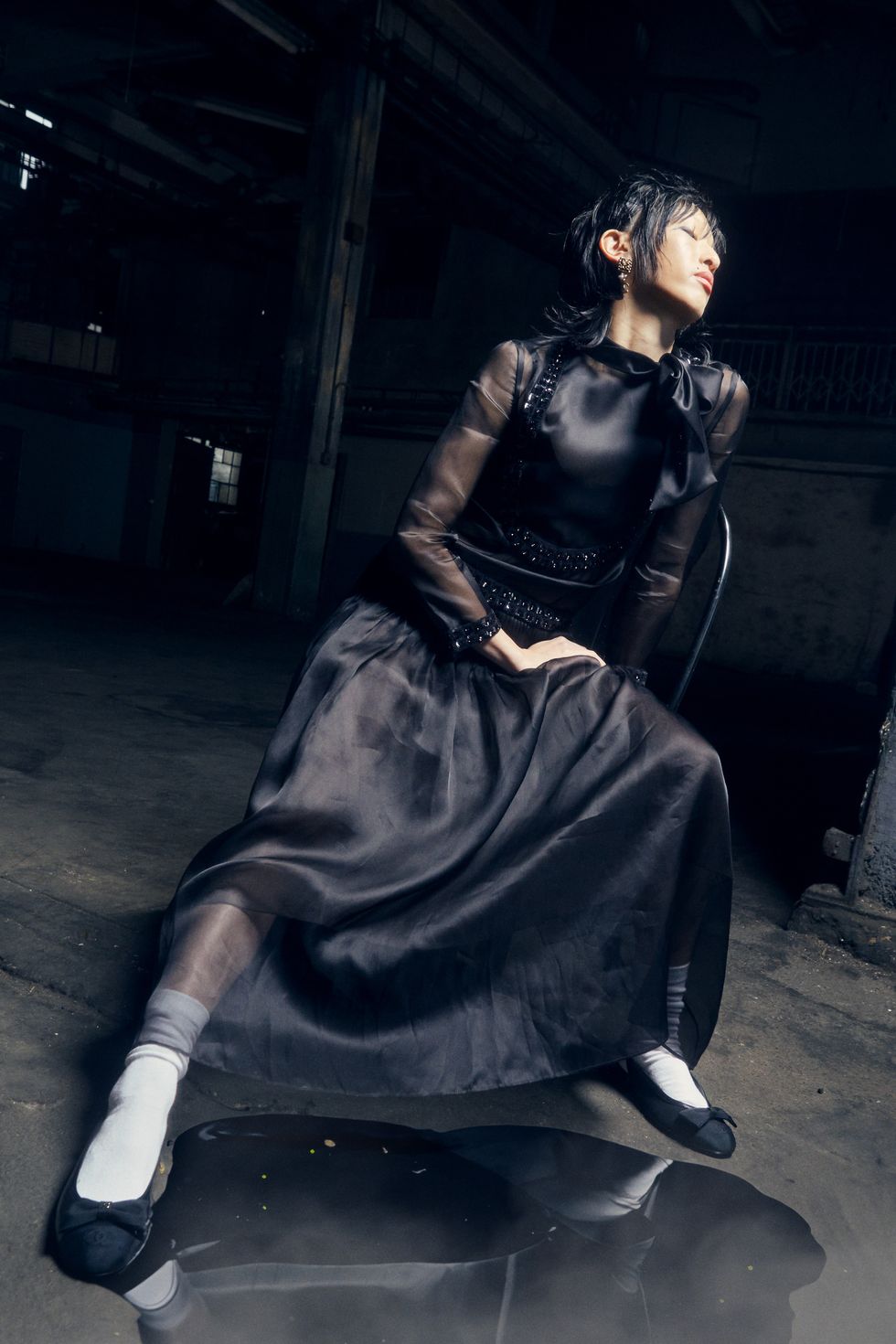
Full Look: Chanel

There’s a reason (many, actually) why black is so ubiquitous in professional settings, McClendon says: it doesn’t show dirt, it’s appropriate for a variety of occasions, you can wear it over and over, and it blends in. Eliza Huber, a fashion editor at WhoWhatWear, often adopts this practical mindset when getting dressed. “I tend to buy for the silhouette more than the color,” she says, “and because I like to rewear items again and again in different ways, when I find a silhouette I like on me, I'll usually buy it in black or another easy-to-style neutral as opposed to a loud shade or pattern.” For a recent day that clocked meetings, the office, and dinner, she wore vintage Tom Ford Gucci trousers, a vest from Aligne, a Liberowe blazer, and Khaite shoes. “All in black, naturally.” Of course. “Textures and proportion are both very important when it comes to black,” she advises. Linda Cui Zhang, associate fashion director at Nordstrom, seconds her point. “Black anchors an outfit and allows fabrication to stand out: sheer tulle, intricate lace, airy mesh, shimmery velvet.”
Nowhere is this better exemplified than among the ’80s wave of Japanese designers in Paris. Rei Kawakubo of Comme des Garçons and Yohji Yamamoto stripped their designs of color but injected them with emotion in the form of oddly oblong structures or perfectly disastrous ruffles.
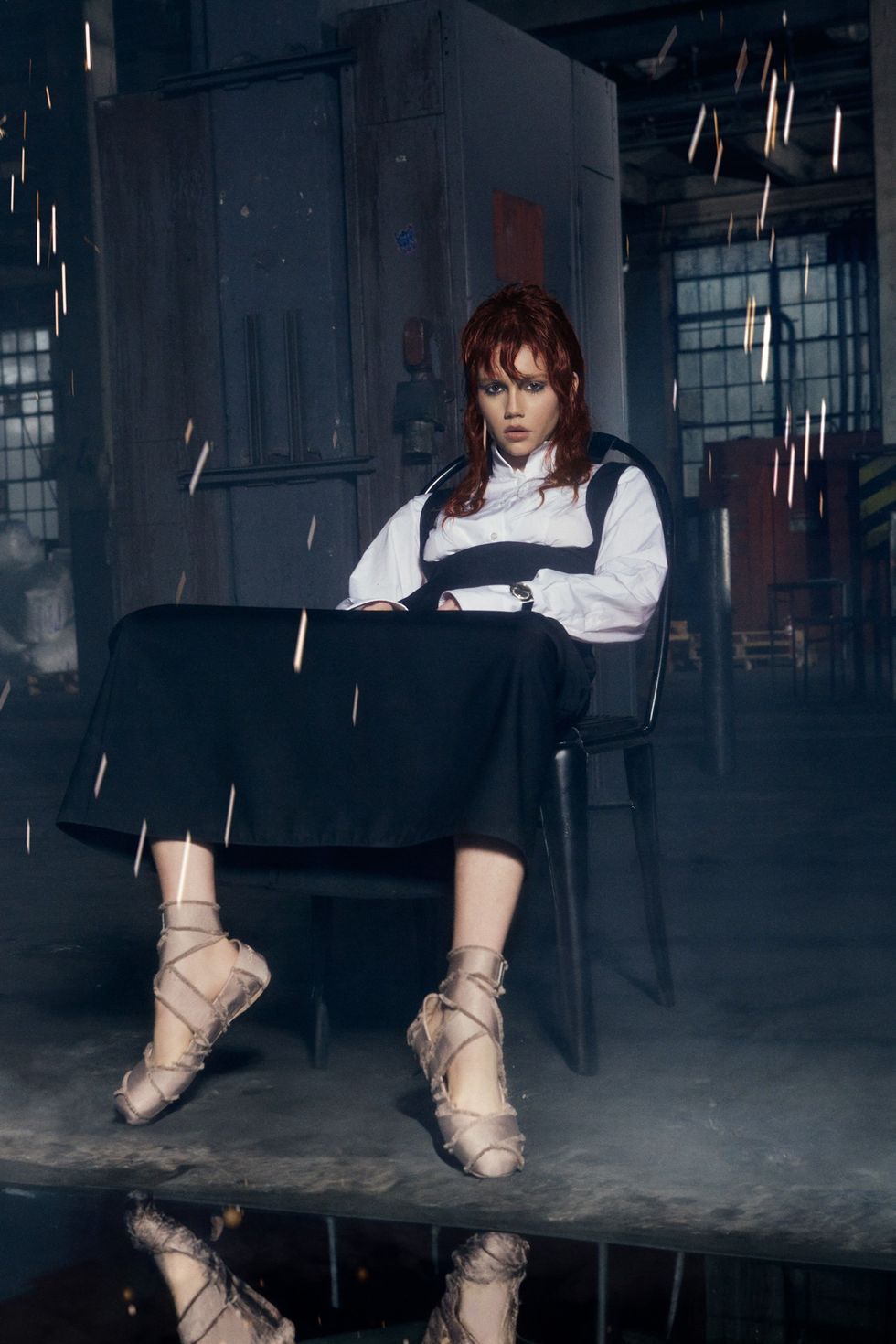
Full Look: Dior; Watch: Timex
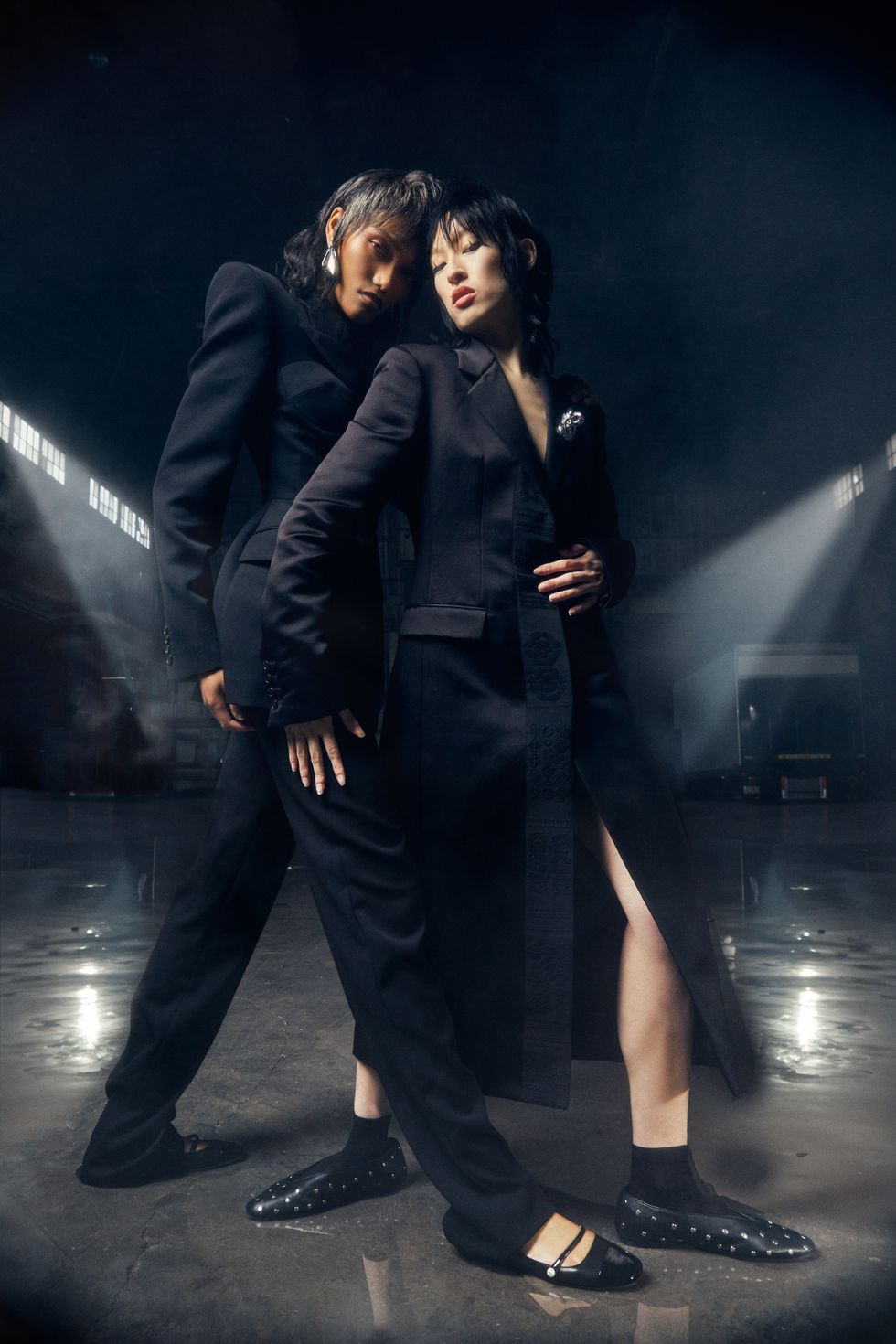
(Left) Suit and Earrings: Alexander McQueen; Flats: Jimmy Choo.
(Right) Coat: Veronica De Piante, Flats: Le Monde Beryl; Brooch: Alexis Bittar
Black has been steeped in counterculture for decades, be that of the Beat Generation or the punks. It practically vibrates with energy. “There is this subcultural note that connects to music, that connects to poetry, that connects to literature, that connects to intellectualism that's also important,” says McClendon. “There is a way in which, in the mid-twentieth century to the late-twentieth century, black coalesces as being this color of the creative industries.”
Today, we think of the Grace Coddingtons, the Edward Ennifuls, the Pierpaolo Picciolis, the Carine Roitfelds, fashion insiders who, post-Working Girl, embraced the creative’s all-black livery and continue to do so. “In the context of the 20th century, black solidified itself as the fashion wardrobe,” says McClendon. The industry’s adoption of black as its de facto uniform proved there’s aestheticism in asceticism. “I've heard anecdotes from mentors and people who were going to shows at that point that everybody was head to toe in black Yohji or Donna, particularly Yohji, and if you weren't wearing that, you stuck out like a sore thumb.”
The industry’s adoption of black as its de facto uniform proved there’s aestheticism in asceticism.
Zhang also views it as dependable. “Black is an eternally classic color. Having lived and worked in New York for a decade, I default to head-to-toe black for a streamlined, elevated outfit,” she says. McClendon herself admits that black dominates her wardrobe. At her previous job as a museum curator in New York, she almost always dressed in all black. 9-to-5, five days a week, jetting from meeting to desk to cocktail party—black was the best option for this transient schedule. “I knew it would be appropriate in a number of different contexts, whatever the day might bring,” she says. “It was also a really easy default to demonstrate style consciousness.”
So is black the most fashionable color? Thanks to a Warholian, Ennifulian, Coddingtonian stamp of approval, wearing it connotes a form of belonging in the industry. “Black seems to be something that's always there and always something that we return to,” says McClendon. “It's different from, say, all-red monochromatic dressing. I see black as a through line, particularly in New York. It's a default, and not in a way that's totally void of any creativity, that's a natural point of return for New Yorkers.” At The RealReal’s pop-up within the Manhattan Vintage Show this April, nearly half of all clothing sold was black, Klein informs me, citing an incredible all-black 1997 Chanel jumpsuit that sold within 24 hours of hitting the floor.

Dress: Coach; Flats: Gianvito Rossi
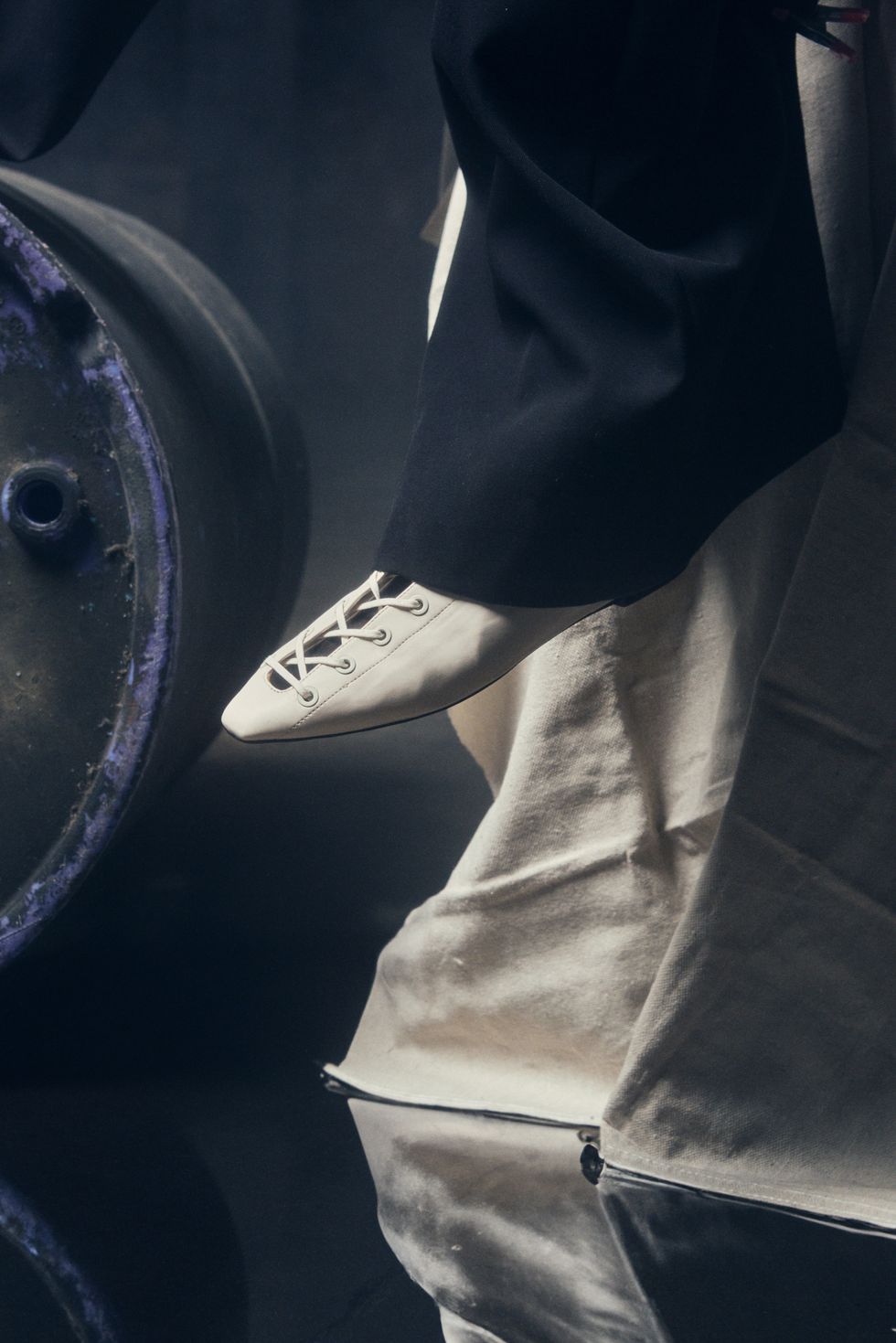
Full Look: Stella McCartney
“There isn’t a day that goes by that I don’t see multiple New Yorkers dressed in all black,” confirms photographer Johnny Cirillo of the street style account Watching New York. “If there is one trend that has been a constant in New York and always will be, it's all black.”
Zarrella, the journalist and fashion raven, was briefly bicoastal after decades of working in fashion in New York. Walking down the street with a friend in Los Angeles, she clocked that both were clad head-to-toe in black. (For her part, a Dries Van Noten dress, a Comme des Garçons shirt, a hat, and a black leather jacket). “My friend said, ‘Katharine, do you think anybody's going to know that we're from New York?’ And I just laughed so hard, because exactly. Everyone did know that we were from New York.”
Art Director: Smiley Stevens/ Managing Editor: Hilary George-Parkin/ Casting Director: Yasmin Coutinho / Executive Producer: Marc Duron/ With special thanks to: Dojohouse & Casey Steidle
Want more stories like this?
Spruce Up Your 9-to-5 With These Spring Dresses
Why Fashion Is Going Back to the Future
When Old Jewelry Becomes New




